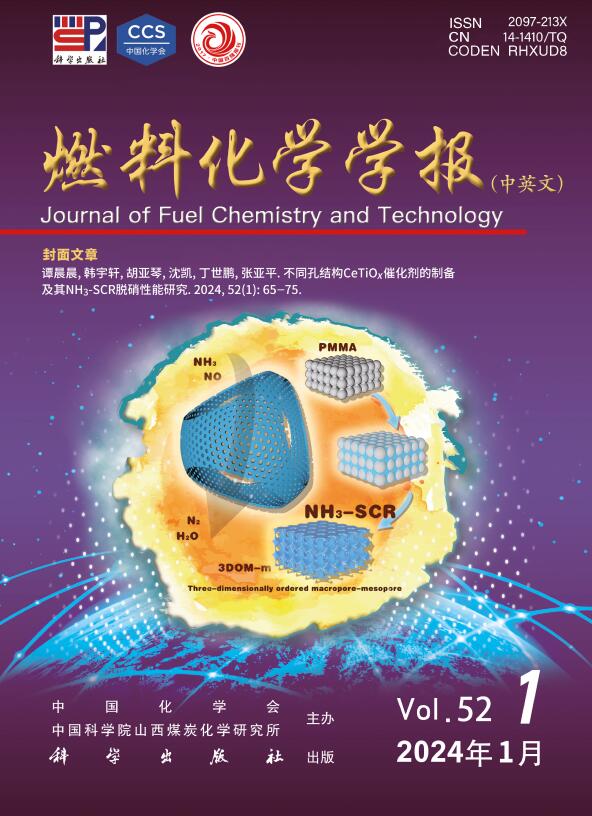Analysis of influencing factors on the properties of coal-to-direct liquefied diesel
Q3 Energy
引用次数: 0
Abstract
To improve the quality of coal-to-direct liquefied diesel, with the help of machine learning method, the properties prediction model of coal-to-direct liquefied diesel was established, in which the chemical structure and diesel properties of each component of a coal-to-direct liquefied diesel were studied. The oil sample used was the finished diesel from a coal-to-direct liquefaction facility at Erdos in 2023 with an annual oil production of one million tons. Descriptive statistics and correlation analysis were conducted on the hydrocarbon composition of the oil sample and the properties of the diesel. It was found that the hydrocarbon composition was predominantly composed of paraffin and cycloparaffin, accounting for 96.57% of the total hydrocarbon composition, with the monocycloparaffin being the most abundant. The analysis of the diesel quality test results showed that the diesel met the commercial diesel quality specifications, with good combustion performance, low-temperature fluidity, and environmental performance. From Pearson correlation coefficient, it was found that some variables had a high degree of correlation. To avoid the impact of multicollinearity on the model interpretation, a tree model algorithm was chosen to establish the model. Random forest (RF) algorithm, light gradient boosting machine algorithm and extreme gradient boosting algorithm were individually used to establish the prediction model that can evaluate the physical characteristic properties of coal-to-direct liquefied diesel, such as density, kinematic viscosity and cetane number, respectively, and the fitting of each algorithm to the diesel combustion performance was compared and analyzed. The results show that the RF model has good fitting performance and high accuracy. On the training set, the determination coefficients (R2) of density, kinematic viscosity and cetane number were 0.946, 0.916 and 0.814, respectively, and the mean absolute percentage error were 0.073, 0.646 and 0.4, respectively. On the test set, the determination coefficients (R2) for density, kinematic viscosity, and cetane number were 0.976, 0.865, and 0.765, respectively, while the corresponding mean absolute percentage error were 0.48, 2.86, and 0.957, respectively. The analysis showed that the contents of paraffin, tricyclic alkane and alkyl benzene had significant effects on the density, kinematic viscosity and cetane number of coal-to-direct liquefied diesel, while the contents of naphthalene and tricyclic aromatic hydrocarbons had little effect on the above properties. Increasing paraffin content will reduce the density and kinematic viscosity of coal-direct liquefied diesel, but will help increase the cetane number of diesels. The increase in the tricyclic alkane content and the alkyl benzene content will increase the density and kinematic viscosity of coal-direct liquefied diesel, but will reduce the cetane number of diesels.
煤制直接液化柴油性能影响因素分析
为了提高煤制直液化柴油的质量,借助机器学习方法,建立了煤制直液化柴油性能预测模型,研究了煤制直液化柴油各组分的化学结构和柴油性能。使用的油样是2023年从鄂尔多斯煤制直接液化设施生产的成品柴油,年产量为100万吨。对油样的碳氢化合物组成与柴油的性质进行了描述性统计和相关性分析。烃类组成以石蜡和环石蜡为主,占总烃组成的96.57%,其中以单环石蜡含量最多。柴油质量测试结果分析表明,该柴油符合商品柴油质量标准,具有良好的燃烧性能、低温流动性和环保性能。从Pearson相关系数可以看出,部分变量具有较高的相关程度。为避免多重共线性对模型解释的影响,采用树形模型算法建立模型。分别采用随机森林(Random forest, RF)算法、轻梯度增压机算法和极端梯度增压算法建立预测模型,分别评价煤直液化柴油的密度、运动粘度和十六烷数等物理特性,并对各算法对柴油燃烧性能的拟合进行了比较分析。结果表明,该模型具有良好的拟合性能和较高的拟合精度。在训练集上,密度、运动粘度和十六烷数的决定系数R2分别为0.946、0.916和0.814,平均绝对百分比误差分别为0.073、0.646和0.4。在测试集上,密度、运动粘度和十六烷数的决定系数R2分别为0.976、0.865和0.765,对应的平均绝对百分比误差分别为0.48、2.86和0.957。分析表明,石蜡、三环烷烃和烷基苯的含量对煤直液化柴油的密度、运动粘度和十六烷数有显著影响,而萘和三环芳烃的含量对上述性能影响不大。增加石蜡含量会降低煤直液化柴油的密度和运动粘度,但有利于提高柴油的十六烷数。三环烷烃含量和烷基苯含量的增加会增加煤直液化柴油的密度和运动粘度,但会降低柴油的十六烷数。
本文章由计算机程序翻译,如有差异,请以英文原文为准。
求助全文
约1分钟内获得全文
求助全文
来源期刊

燃料化学学报
Chemical Engineering-Chemical Engineering (all)
CiteScore
2.80
自引率
0.00%
发文量
5825
期刊介绍:
Journal of Fuel Chemistry and Technology (Ranliao Huaxue Xuebao) is a Chinese Academy of Sciences(CAS) journal started in 1956, sponsored by the Chinese Chemical Society and the Institute of Coal Chemistry, Chinese Academy of Sciences(CAS). The journal is published bimonthly by Science Press in China and widely distributed in about 20 countries. Journal of Fuel Chemistry and Technology publishes reports of both basic and applied research in the chemistry and chemical engineering of many energy sources, including that involved in the nature, processing and utilization of coal, petroleum, oil shale, natural gas, biomass and synfuels, as well as related subjects of increasing interest such as C1 chemistry, pollutions control and new catalytic materials. Types of publications include original research articles, short communications, research notes and reviews. Both domestic and international contributors are welcome. Manuscripts written in Chinese or English will be accepted. Additional English titles, abstracts and key words should be included in Chinese manuscripts. All manuscripts are subject to critical review by the editorial committee, which is composed of about 10 foreign and 50 Chinese experts in fuel science. Journal of Fuel Chemistry and Technology has been a source of primary research work in fuel chemistry as a Chinese core scientific periodical.
 求助内容:
求助内容: 应助结果提醒方式:
应助结果提醒方式:


